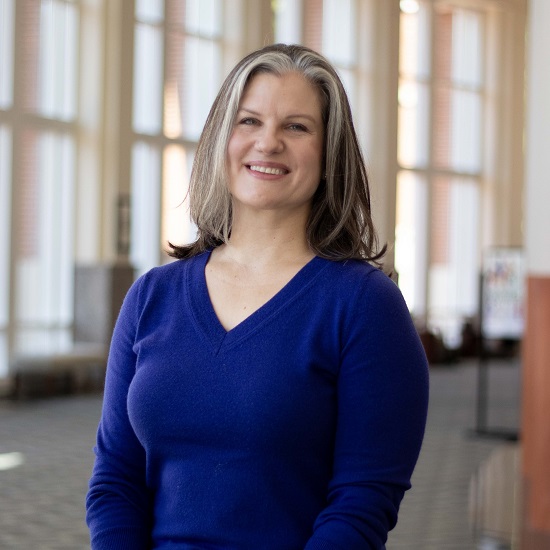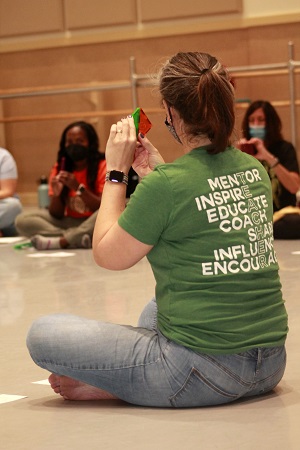
For Dr. Marissa Nesbit, sitting still has never been her style. While she managed to stay in her seat in her honors classes growing up, she would have much rather learned by getting up and moving around.
Growing up in Texas, it was common for girls to either do cheerleading or dance team, and Nesbit was drawn to dance. Nesbit spent years dancing despite it never being her intended career path. Her original goal was to be an engineer. She attended Pitzer College in Claremont, California, earning a degree in psychobiology, but had the opportunity to take dance classes throughout.
“They had a rule that if you kept your GPA up, you could take any course that the university offered,” Nesbit explains. “Then, through a registration quirk I ended up in the dance majors’ class even though I wasn't a dance major. I was taking modern dance classes and just really loved it, and so I ended up finishing with a science degree, but always dancing while I was in college. I had some really wonderful professors, really supportive, and I got into choreography and improv and just really liked all that."
Nesbit taught special education classes for a few years post graduation, but her passion for dance caught back up with her. So she found her way back to college, this time to get a Master of Fine Arts in Dance from Texas Woman’s University.
Following graduate school, Nesbit moved to Charlotte, working with various arts education programs. It was here she learned the vast ways arts can be applied to the educational curriculum at large.
"Education wasn't really on my radar, and I think that's because my experiences in dance and my experience in school were very separate. So I found myself feeling like a lot of education institutions would be too restrictive for what I was interested in. I found my way to teaching through a very circuitous route,” Nesbit explains.
While working with the North Carolina Dance Theatre (now the Charlotte Ballet), Nesbit taught alongside UNC Charlotte dance faculty Pamela Sofras (now retired) and discovered the many ways dance can be applied to common core learning.
“Pamela really helped me translate all this artistic and theoretical experience that I had as a graduate student into 'how do we make this accessible and relevant for students in schools?'”

"I love working with teachers in other content areas. I love working with people who are new to dance and helping them see the connections between dance and something else they teach or something else they're interested in."
Nesbit stresses that arts integration puts the arts and other academic subjects on a level playing field, bringing different disciplines together equally to advance learning in both.
“I'm not interested in using dance as a tool to be better at reading; I am interested in teaching dance and literacy side by side, so that we can explore some really big and interesting ideas in ways that we can’t if we do either one in isolation."
Arts integration is what Nesbit so desired as a kid, and something she can now pass on to future generations. It helps students who, much like she was as a child, didn’t like to sit still. Students can learn through active learning and engagement with their body and their mind, enhancing the education experience for students.
“I never wanted to sit still, I was just really obedient, so I forced myself to sit still even though I hated it. Thinking about how we can make school experiences more lively and more engaging for children and how dance isn't something that belongs to others and for others to create and that your job is just to replicate it, but really dance is something that we're all continually contributing to and letting it evolve."
Nesbit now teaches in the same role as her former mentor, Sofras. She works everyday to uphold the things she learned from Sofras, teaching her students the importance of dance in the real world, along with how they can be a part of the change within education. She teaches her students to create their own classes, their own way. She doesn’t teach so her students can replicate her style, but so they can create their own style of teaching that allows arts integration to evolve and grow in any which way it chooses to grow, because the world of dance, much like the world we live in, is forever shifting and responding to the things we create.
"Dance is not fixed. It's something that is always shifting and changing and we, whether it be teaching or choreographing or performing, we're always contributing to that shift and that change.”
By Rayden Leeder